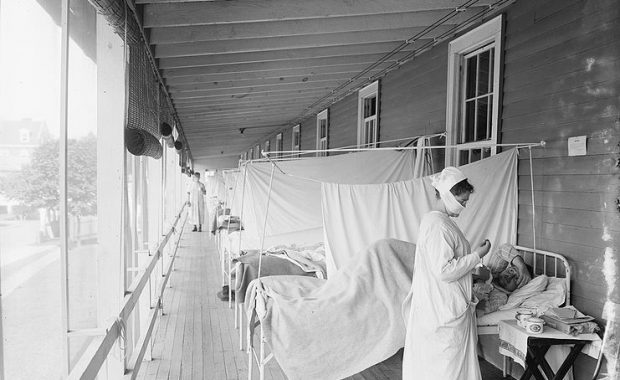The flu pandemic of 1918 was a catastrophic event that claimed the lives of an estimated 50 million to 100 million people around the world. In total, an estimated 500 million contracted the disease. It put so much pressure on worldwide infrastructure that civilization itself was threatened.
The flu began in January 1918 and did not peter out until December 1920. The flu actually came in three waves, each one deadlier than the last.
There is much that can be learned from the 1918 flu pandemic that can help us today. It is one of the most widely studied topics in medicine, but has been largely forgotten by the general public.
A recent article in Men’s Health by Spencer Dukoff stated: “For the past century, experts have considered the 1918 influenza pandemic, colloquially known as the “Spanish flu,” as the benchmark for pandemics. Control efforts developed in the wake of the 1918 flu pandemic shaped how the modern world responds to viral outbreaks, including isolation, quarantine, communications about personal hygiene, use of disinfectants, and limitations of public gatherings—all of which are coming into play again, as new cases of COVID-19 emerge.”
A generation ago, many people were still alive who remembered the events of 1918 vividly. They could remember being sick with the flu themselves, or losing family, friends and neighbours to deadly outbreak.
If you are already an online subscriber, CLICK HERE to access your subscription and read the full story.
If you wish to subscribe online, CLICK HERE, or you can pick up a copy of the March 25 Valley Gazette for the complete story.
